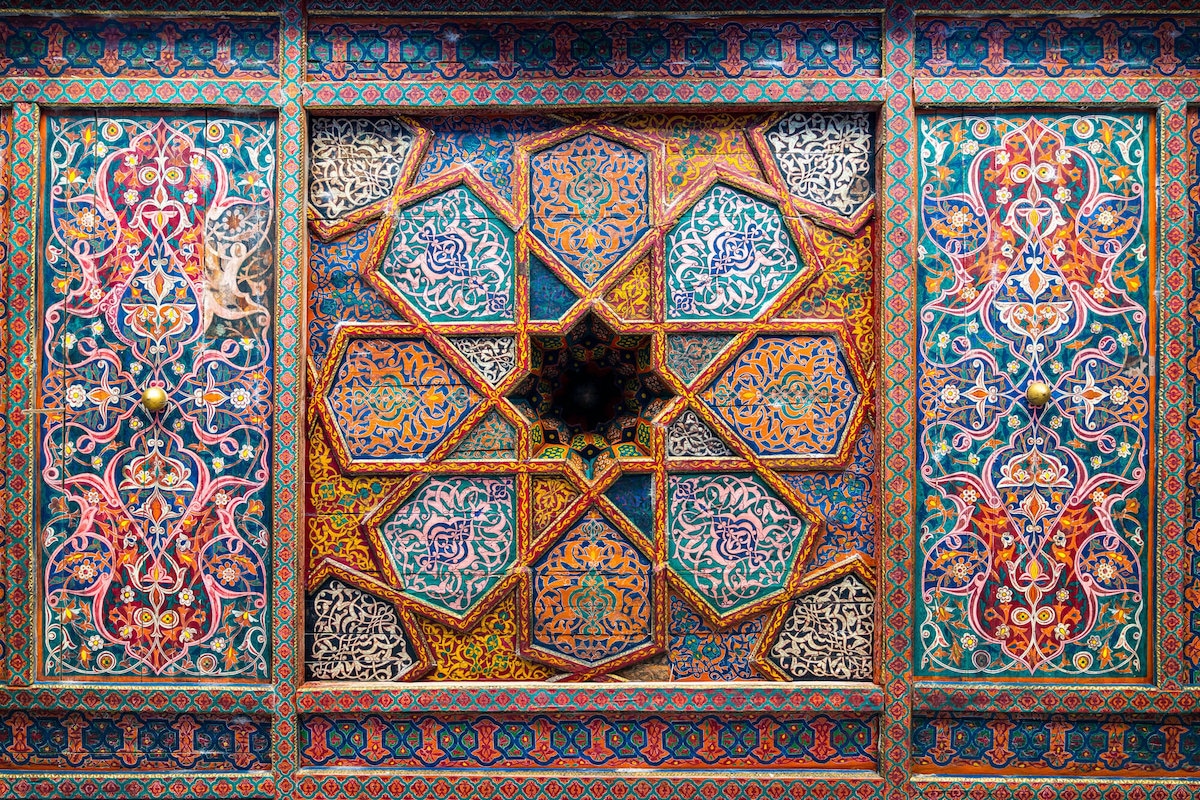
Ceiling details at the Tash Hauli Palace, Khiva
London-based travel photographer Christopher Wilton-Steer invites you to take a virtual journey to the heart of Central Asia. In 2019, he spent 4 months crossing 17 countries, traveling 40,000 km (24,854 miles)—by bus, car, train, boat, and horse—from London to Beijing. Following the famous Silk Road, he documented the network of ancient trading routes through the people, cultures, and architecture he encountered along the way.
Now that he’s returned to London, Wilton-Steer has created collections of his photos that allow us to learn more about some of the most remote locations in the world. His Ceilings of Uzbekistan series documents the dazzling ceiling designs found in the palaces, mosques, madrasahs, and mausolea there. These centuries-old, colorful, geometric ceilings highlight the beauty of Islamic architecture, and give us insight into the ancient culture.
We recently caught up with Wilton-Steer to ask about his trip. Read on for My Modern Met’s exclusive interview.
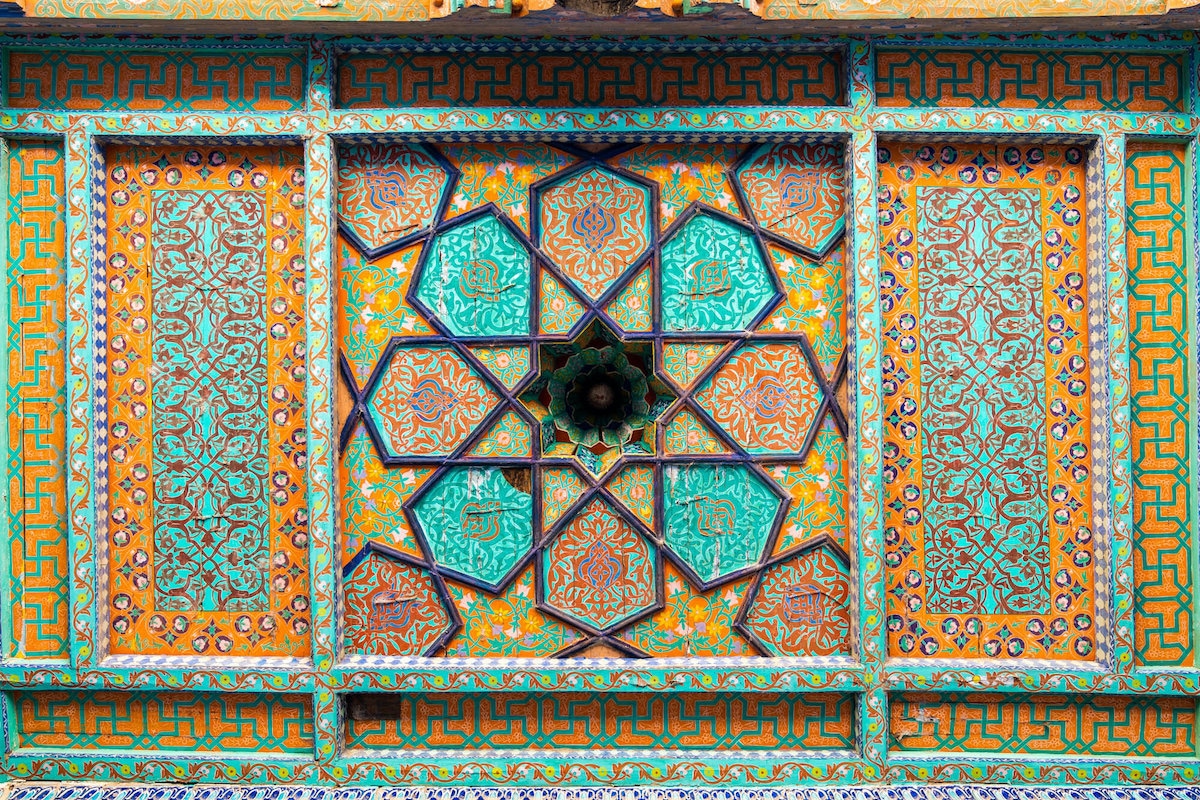
Ceiling details at the Tash Hauli Palace, Khiva
When did you first take up travel photography, and what drew you to the medium?
I first started getting into it about 16 years ago in my early 20s. During my university days, I spent the summers traveling around Europe and took cheap throw-away cameras with me. It wasn’t until my early 30s that I started taking it more seriously though. I had begun traveling to more remote and off the beaten track destinations partly due to my work with the charity, Aga Khan Foundation, and wanted to share my experiences of the people, places, and cultures I encountered with friends and family back home.
Travel has always been a way for me to learn about myself and, of course, the world. So much of what we read in the news is negative—that’s the nature of news. But that negative news shapes our perspective of people and places we know very little about. Through my photography I want to tell a different story and share the sense of curiosity and wonder I feel when I encounter other cultures.
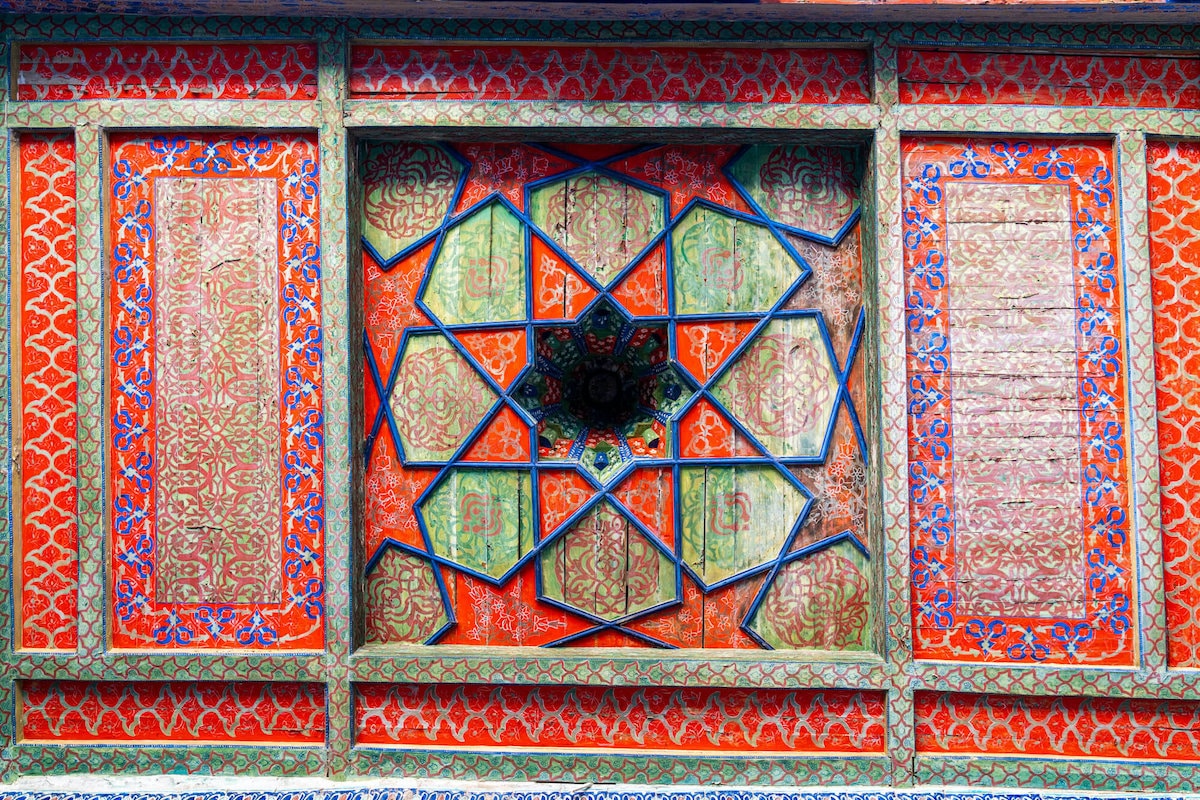
Ceiling details at the Tash Hauli Palace, Khiva
You’ve traveled all over Africa, Asia, and the Middle East—but always to places off the beaten track. What do you love most about exploring the unknown?
Because they are unknown to me, the opportunity to learn is greatest in these places. I remember when I first visited Pakistan. I was pretty nonchalant about the whole visit, but when the airplane wheels hit the tarmac, I thought to myself: “What the hell are you doing here? This is a dangerous place to be.” I spent about two and a half weeks traveling mostly in the mountains in the north and it was a life-changing experience. Not only in witnessing the scarcely believable beauty of the Himalayan, Karakoram, and Hindu Kush mountain ranges, but more importantly in meeting some of the kindest and most hospitable people I have ever encountered. This wasn’t the county that I thought I knew, this was something completely different.
After that trip, I realized that I had to disregard much of what I thought I knew about places and, if I was lucky enough to visit them, to draw my own conclusions. Acquiring that personal experience, that challenges my perceptions, is deeply satisfying and addictive.
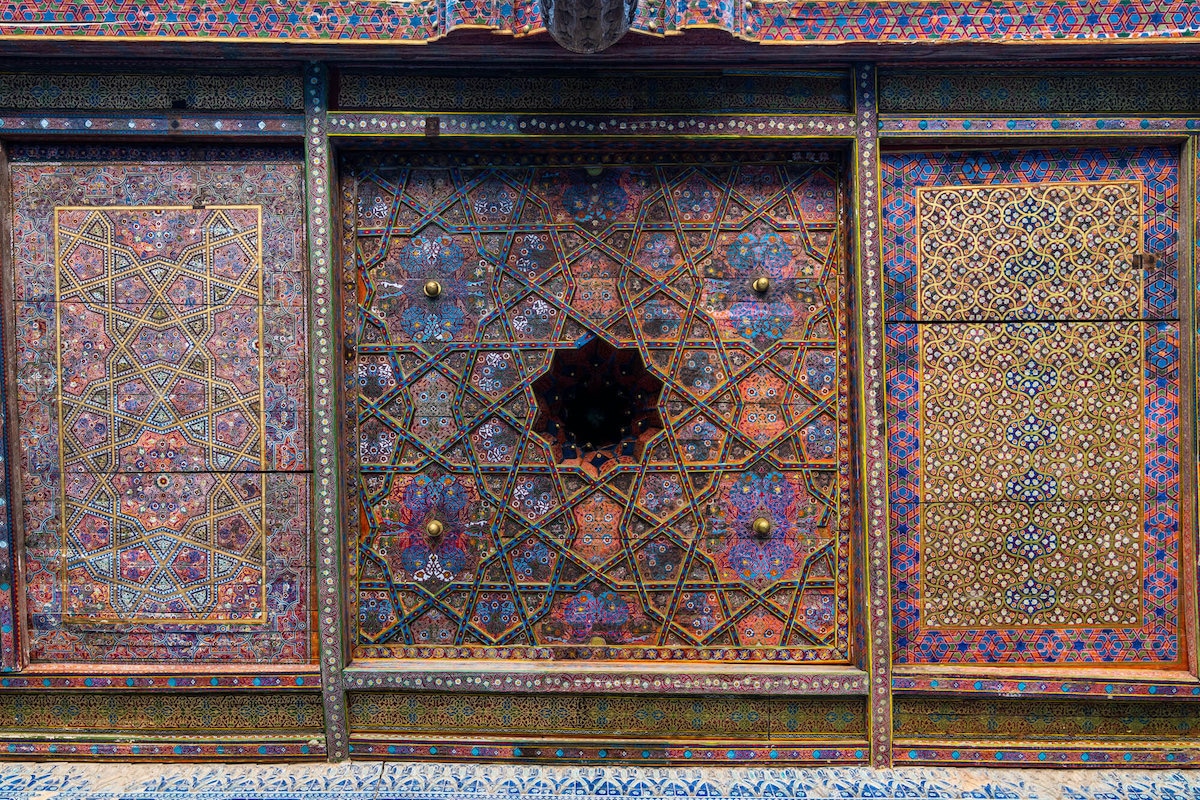
Ceiling details at the Tash Hauli Palace, Khiva
Can you tell us a bit about your journey from London to Beijing, along the old Silk Road?
This was a journey I had dreamed about from a young age. For me, it is the ultimate journey. One that has been traveled and written about for thousands of years. I told myself “one day” I’ll go. I realized I had been waiting for this “one day” for some time so, fearful the opportunity would escape me, I started planning it. I wanted to travel from one end of Eurasia to the other over land because I wanted to experience and document the transitions between cultures. When we fly somewhere, we arrive at the destination and all aspects of life are different. By traveling over land, I hoped to understand more about the similarities between different cultures and learn more about what connects us.
Over four months I traveled across 15 countries by bus, car, train, boat, and horse across seas, deserts, and mountains—covering over 40,000 km. Temperatures went from -10 °C (14 °F) in the mountains of Central Asia to +55 °C (131 °F) in the Lut desert of Iran. I am fascinated by all aspects of culture but particularly traditional artisanal crafts. These often tell the story of a region’s history. I spent a great deal of time tracking down artisans still practicing today to hear their stories and the story of their craft.

Ceiling details at the Tash Hauli Palace, Khiva
You have documented some amazing people, places, and cultures. Do you have a favorite experience from the tour?
When I crossed over from Pakistan to China I sat hunched up in the front seat of the minibus with an old man for about six hours. I had some dried apricots and shared those with him. We didn’t speak each other’s languages, but he grunted and nodded his head in appreciation. When we reached the first city across the border we went our separate ways.
A few days later I was in the legendary Silk Road town of Kashgar and saw him talking animatedly to a Uyghur shopkeeper. I waited for a while and realized he was selling the shopkeeper antiques from his suitcase. Then it dawned on me that this old man was still going back and forth across the border and selling wares the old-fashioned way like they had along the Silk Road trading routes for thousands of years. I was amazed to see it. When the old man had finished bartering and was leaving the shop, I tapped him on the shoulder. He stared at me for a moment and then, recognizing me, his face broke into a grin and he hugged me. It was such a wonderful moment. I motioned that I would like to take his photo. He let me, and then we went our different ways looking back to check on the other as we went. I will never forget that.
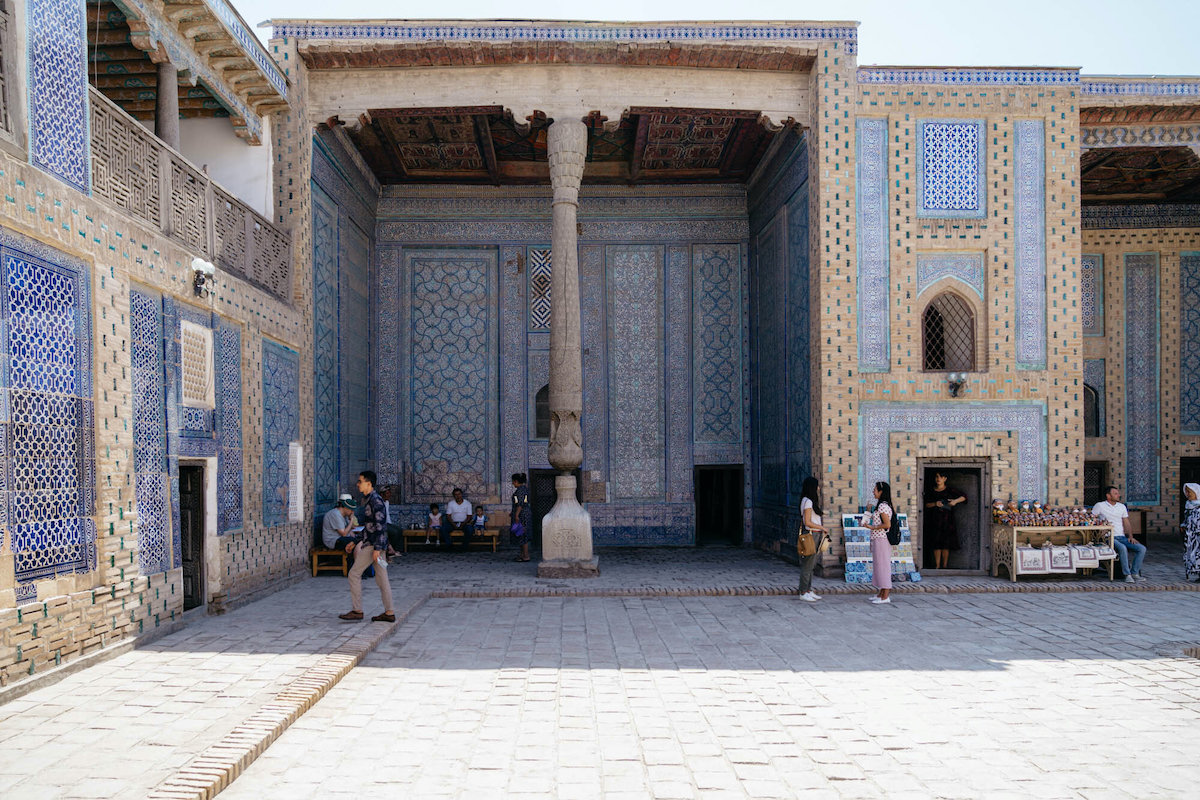
Tash Hauli Palace, Khiva
Can you tell us a bit about your time in Uzbekistan?
I crossed over to Uzbekistan via one of its land borders with Turkmenistan. I was due to meet my girlfriend Aleyha, who you can see in some of these photos, in the nearby city of Khiva (she had flown over from London). But she had made her way to the border area and was waiting for me. That was a wonderful moment. We then spent two weeks traveling from the old oasis town of Khiva to Bukhara and then onto Samarkand; three cities that become extraordinarily rich due to the Silk Road trade routes that passed through them. All of the photographs from this collection were taken in these cities. From there we passed briefly through the capital Tashkent and onto the Fergana valley in the east. We parted ways there with Aleyha heading back home and I continued east to Kyrgyzstan.
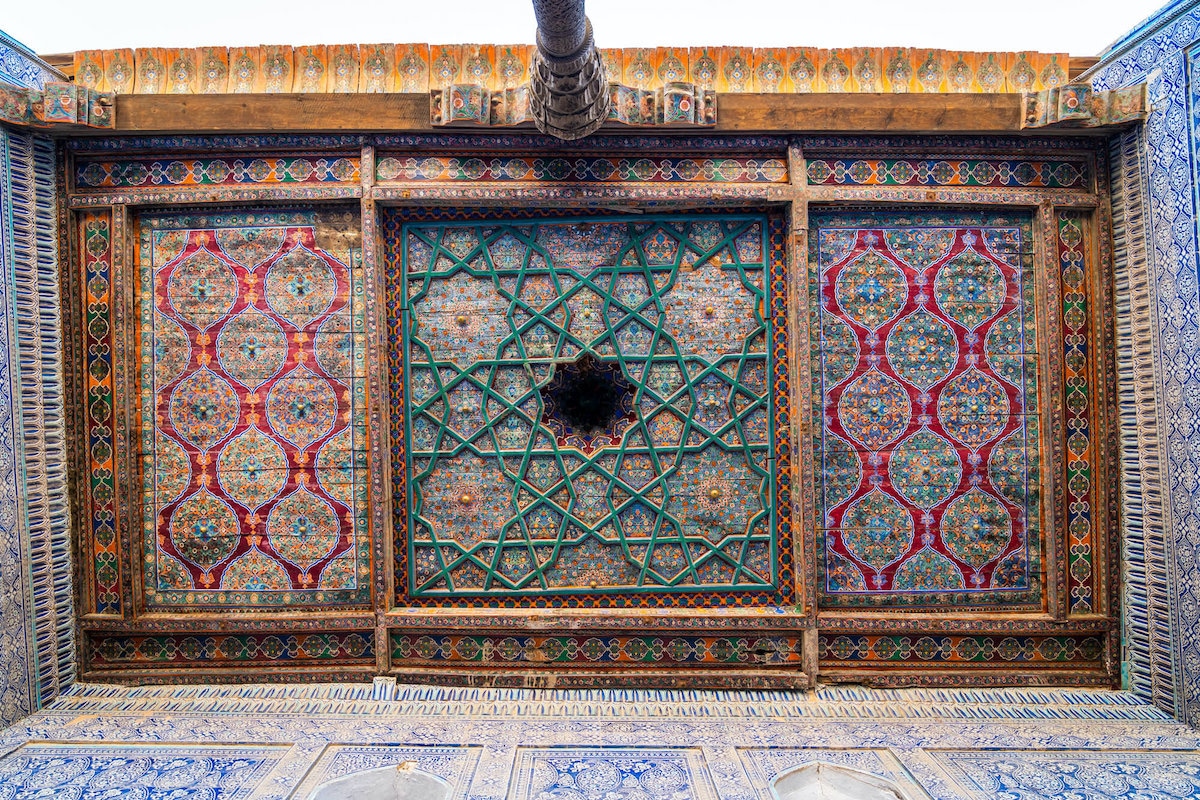
Ceiling details at the Tash Hauli Palace, Khiva
Your Ceilings of Uzbekistan series captures some of the most ornate architectural features in the world. What fascinates you most about them?
From an aesthetic point of view, the geometry is awe-inspiring. Between the 10th and 16th centuries, the Islamic world’s understanding of mathematics and geometry was just so much more advanced than anywhere else and the application of it into architecture and design is breathtaking to behold. Also, I love the blue and turquoise surface decoration of the buildings in Samarkand particularly. The square shapes that look a bit like QR codes are actually forms of Kufic calligraphy that repeat the words of “God.” “Mohammed,” and “Ali.” They are several hundred years old but look so modern, like they were designed yesterday.
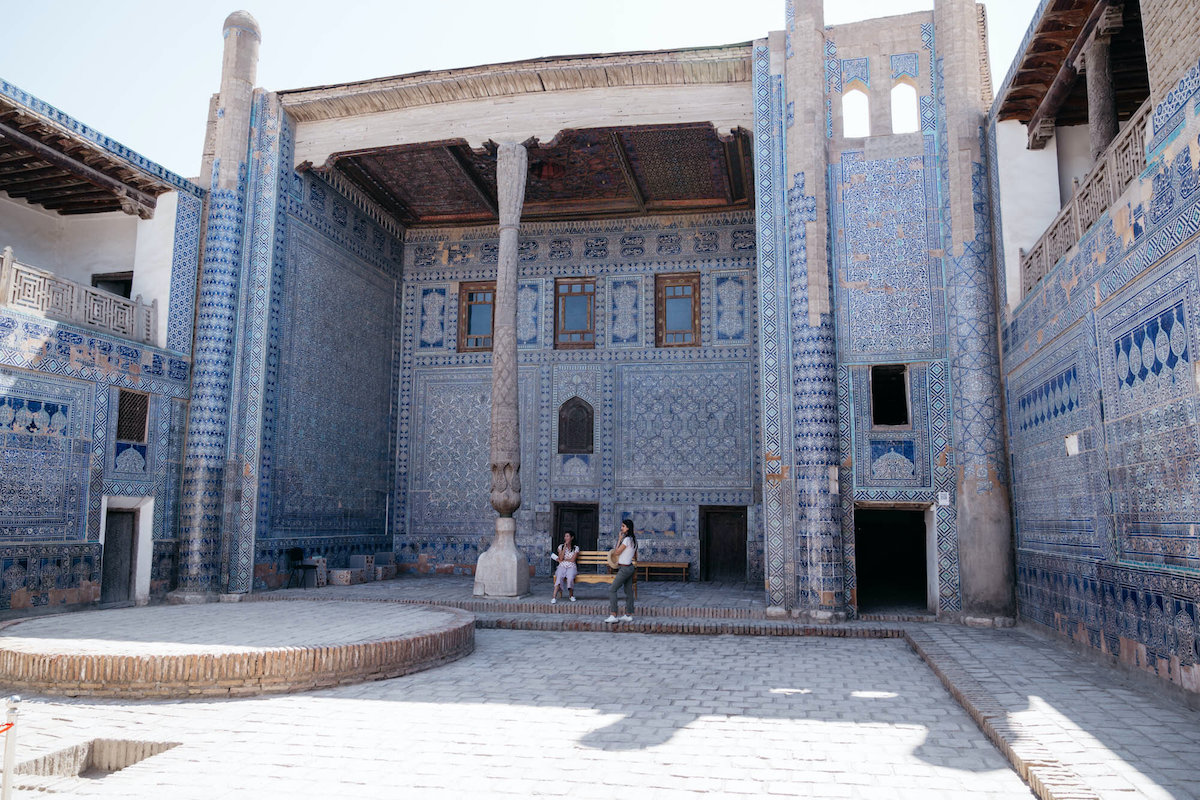
Tash Hauli Palace, Khiva
Did you learn any interesting facts about the palaces and mosques there?
Those that are found in Samarkand were mostly built by the Timurid dynasty which was founded by a great king named Amir Timur in the 14th century. He was nicknamed “Timur the Lame” by his adversaries due to a limp he likely acquired in battle. He was a great military leader that conquered an empire that covered most of Central Asia and modern-day Iran. He was also a great patron of the arts. The iconic turquoise domes and tile-work that characterizes much of Central Asian architectural heritage was popularized by Amir Timur and his dynasty. Interestingly, Amir Timur was the great, great, great grandfather of Babur who founded the Mughal dynasty that covered most of South Asia and whose descendants would later build the Taj Mahal amongst other architectural wonders.
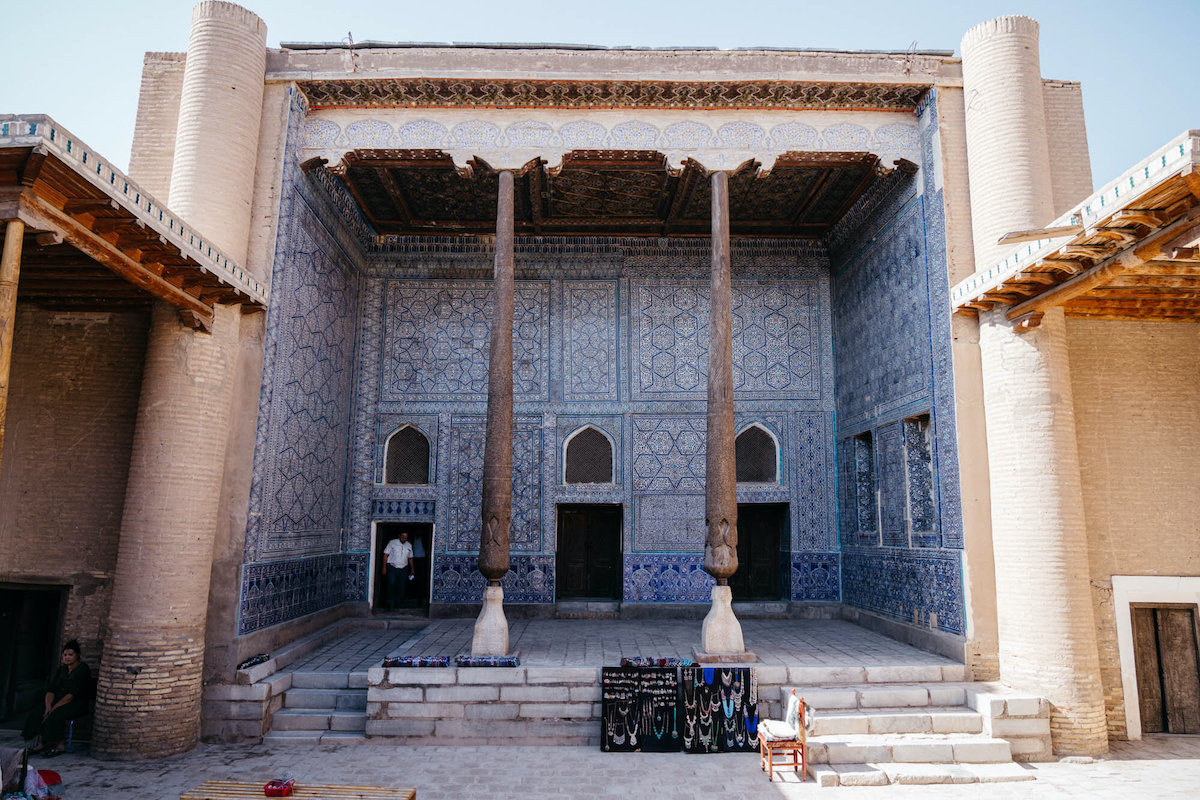
Tash Hauli Palace, Khiva
Where are you spending lockdown and how are you keeping occupied?
At my flat in north-east London. I’ve got tons of photos to edit so that’s keeping me busy. Otherwise, I’m working as usual for the Foundation and currently reading a biography of the 19th-century explorer Richard Burton. He spoke over 25 languages…!
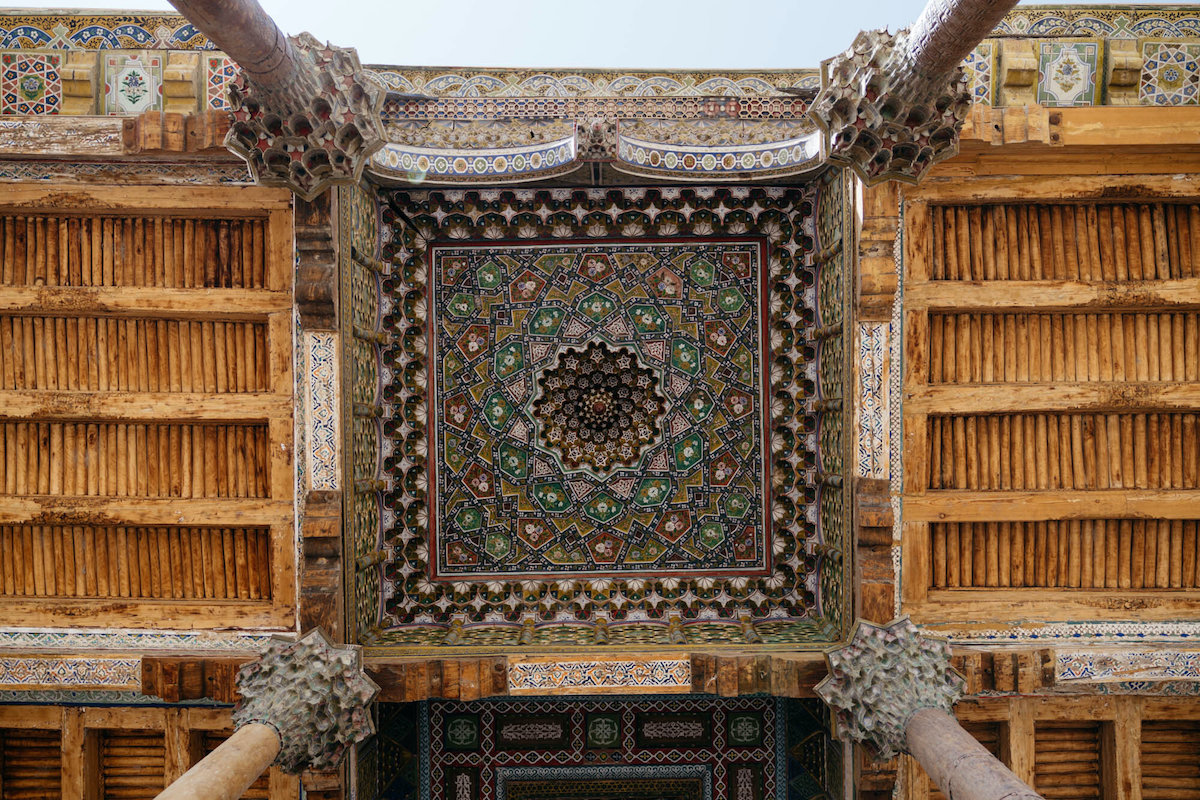
Ceiling details from the Bolo Haouz Mosque, Khiva
Where do you plan to travel next, once restrictions are lifted?
My girlfriend and I had a trip to Japan booked when the lockdown started so, all being well, we’ll go there at the next available opportunity. I would also very much like to visit Afghanistan. I was unable to travel there last year due to unusually high security concerns (there was a Presidential election at the time) so I would like to visit Kabul, Bamiyan, Balkh, and Herat to complete my journey.
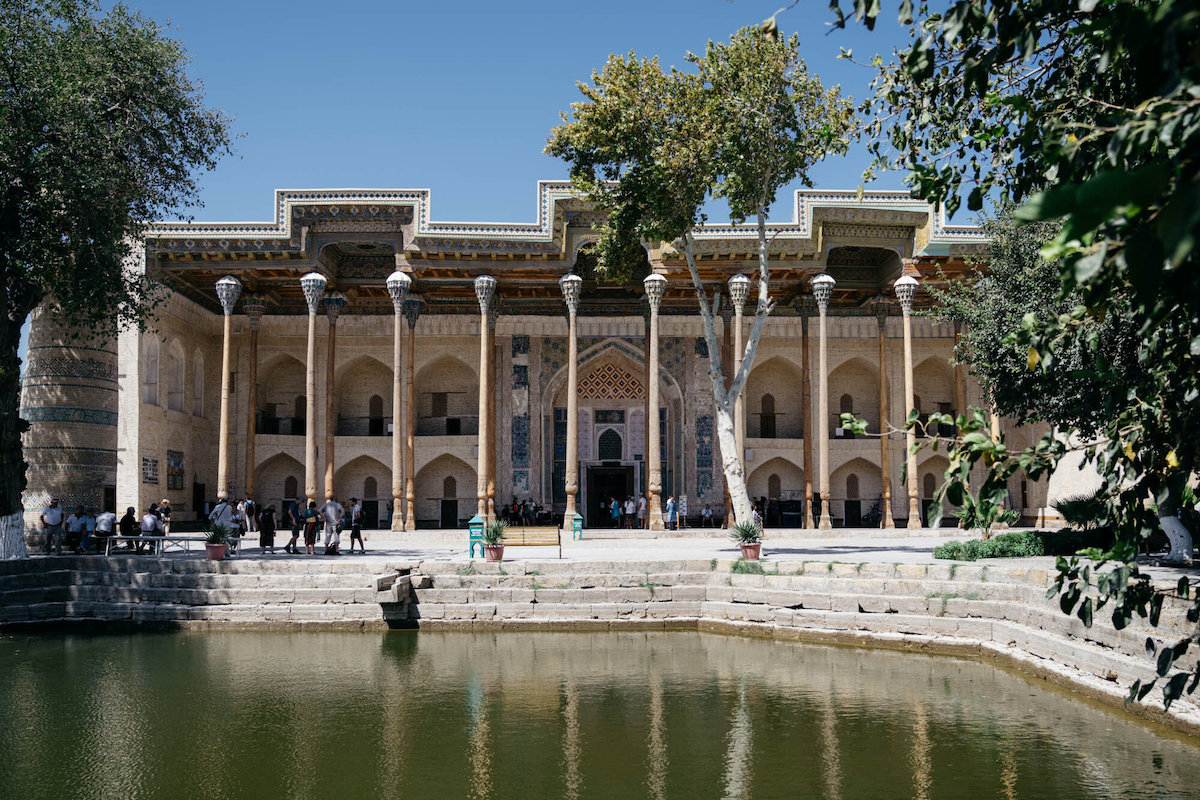
Bolo Haouz Mosque is a historical mosque in Bukhara, Uzbekistan. Built in 1712, on the opposite side of the citadel of Ark in Registan district, it is inscribed in the UNESCO World Heritage Site list along with the other parts of the historic city.
Do you have any upcoming exhibitions or projects you’d like to share?
I am planning an exhibition about the Silk Road. I want it to be an outdoor exhibition so everyone can come and see photos and stories of the varied and wonderful cultures I experienced along the road. It was going to take place in July in London; but, due to coronavirus, it will likely have to be postponed until next year. Later this year, easing of restrictions permitting, I will have a series of exhibitions in Canada about artisans in Cairo. In the meantime, given the restrictions, I am exploring the possibility of photographing craftspeople from around the UK.
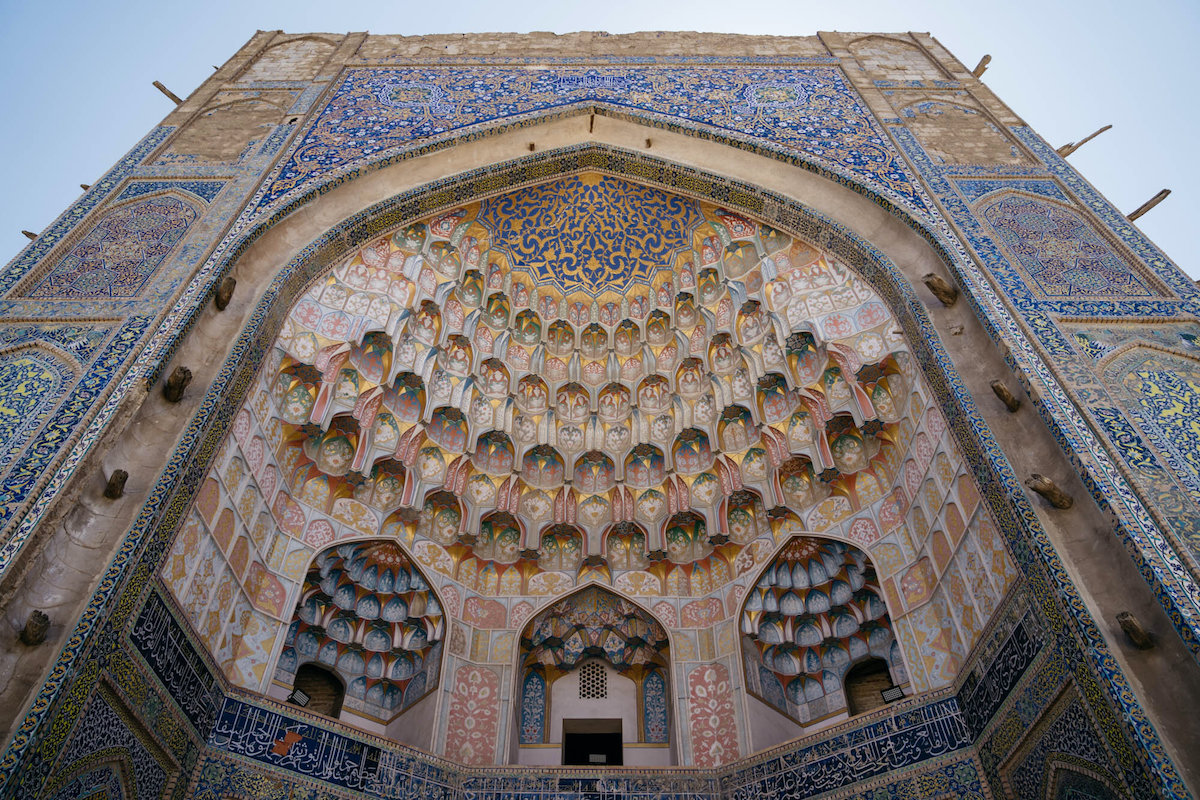
Ceiling details from the Abdullazizkhan Madrassa, Bukhara

Ceiling details from the Abdullazizkhan Madrassa, Bukhara

The Abdullazizkhan Madrassa, Bukhara
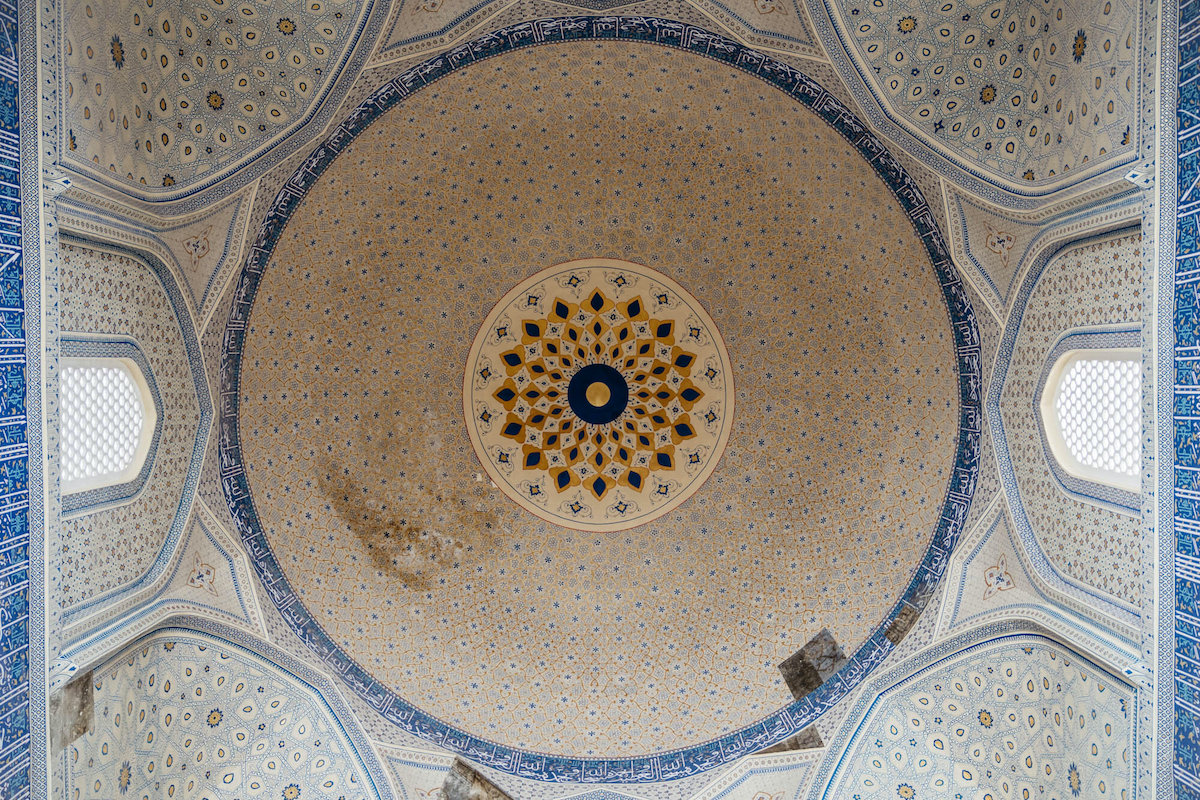
Ceiling details from the Bibi-Khanym Mosque, Samarkand

The Bibi-Khanym Mosque, Samarkand

The Bibi-Khanym Mosque, Samarkand
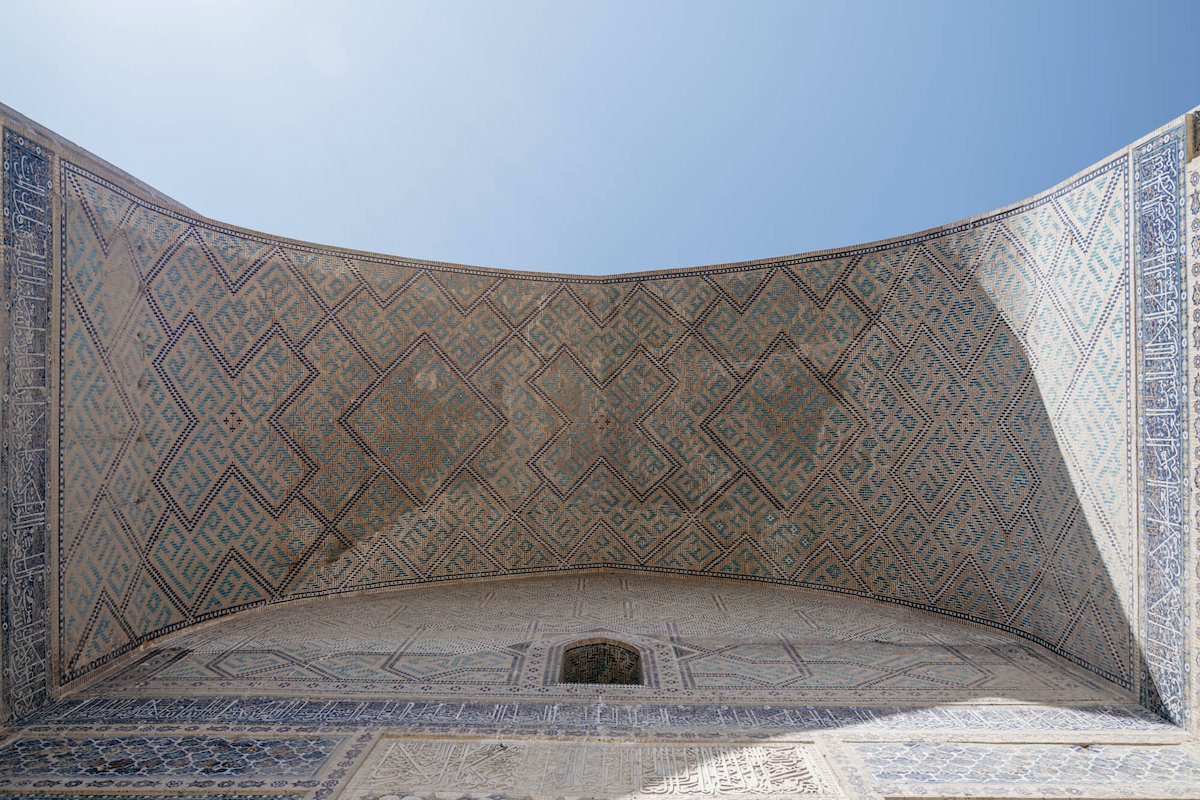
Ceiling details from the Bibi-Khanym Mosque, Samarkand
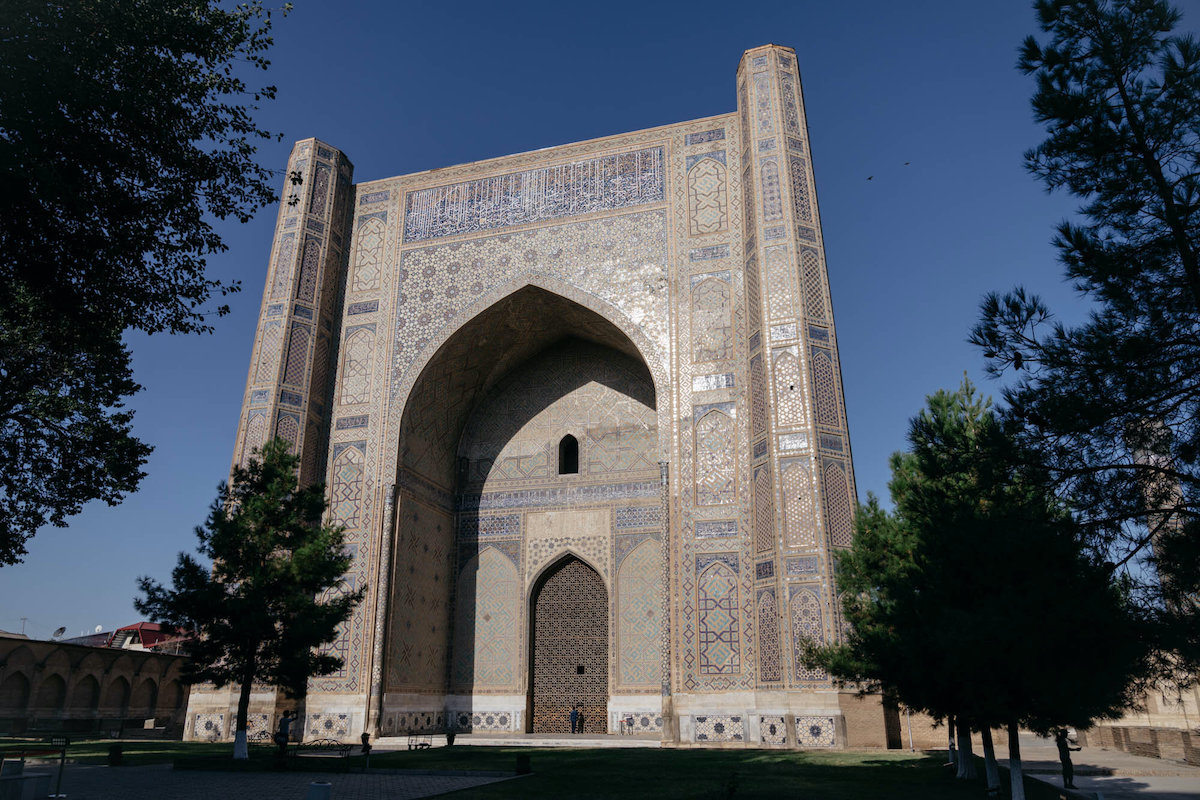
The Bibi-Khanym Mosque, Samarkand

The Bibi-Khanym Mosque, Samarkand
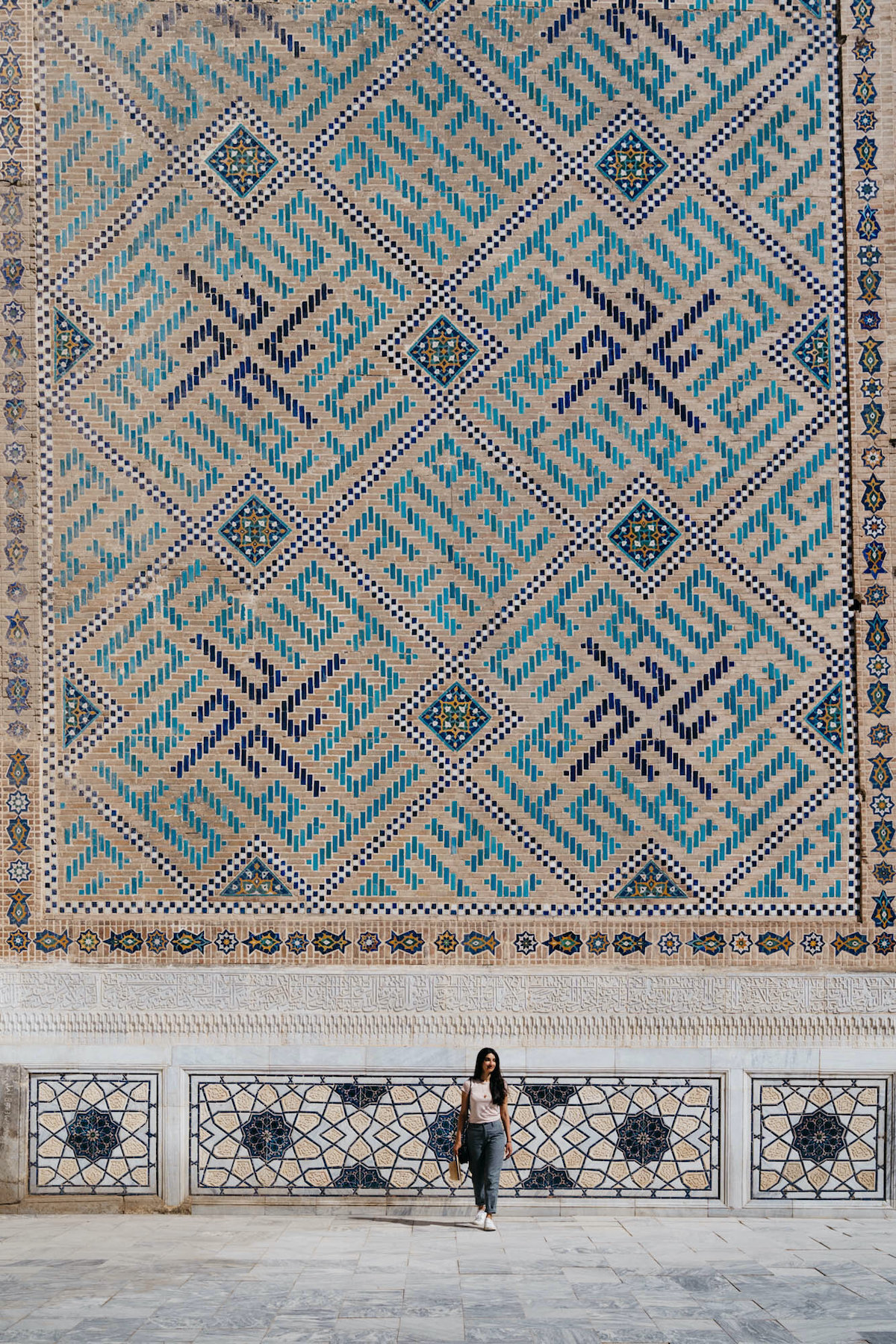
Details from the Bibi-Khanym Mosque, Samarkand

Ceiling details from the Shah-i-Zinda tomb complex, Samarkand
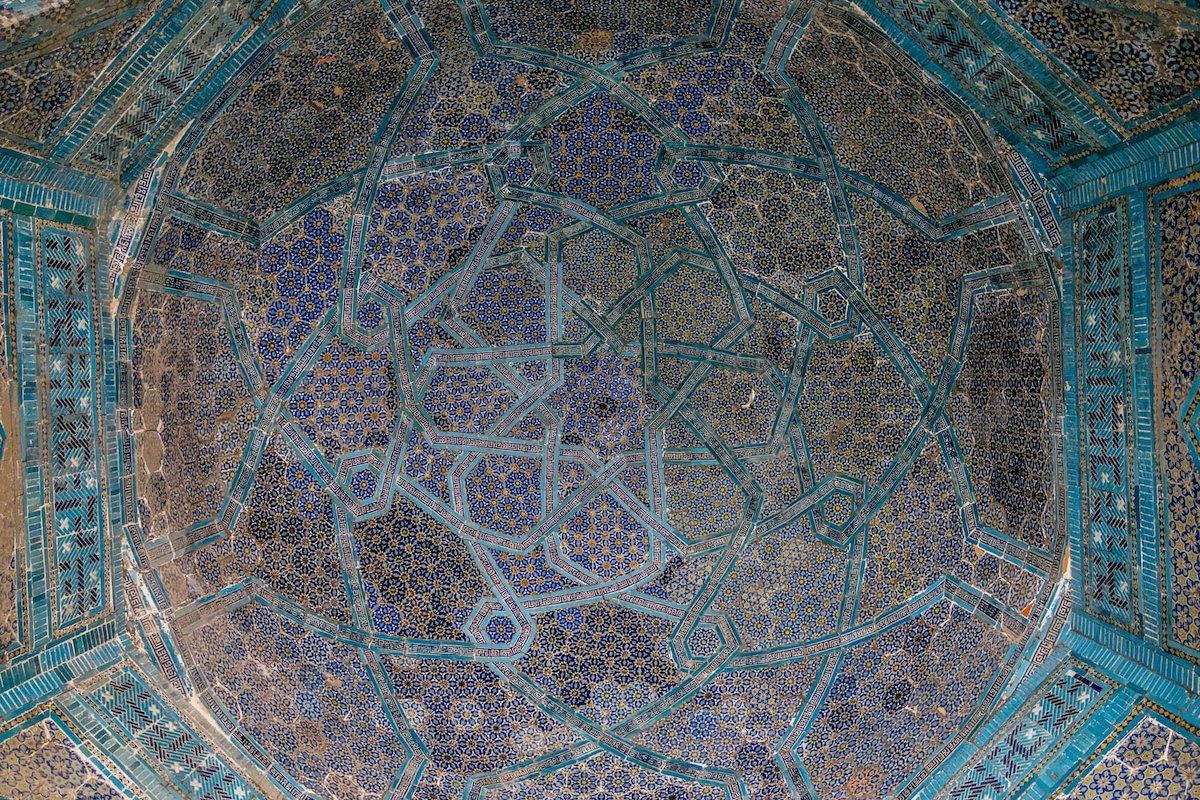
Ceiling details from the Shah-i-Zinda tomb complex, Samarkand
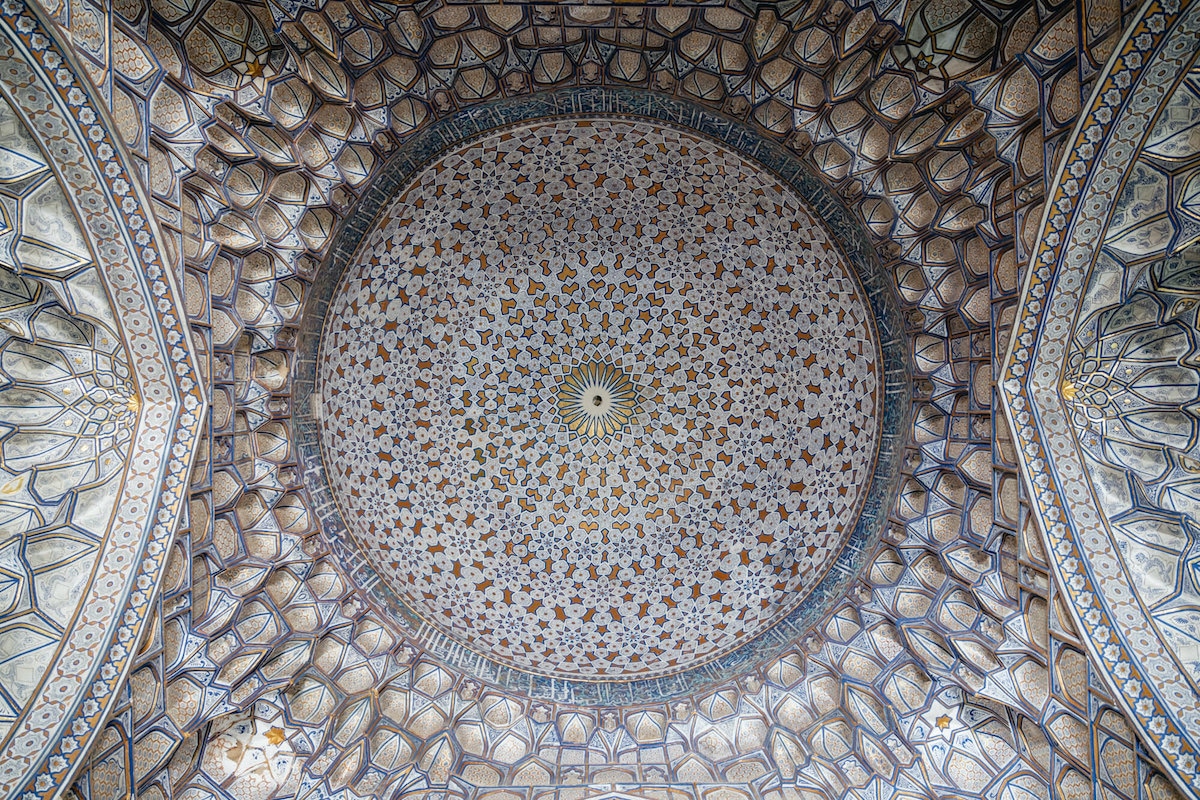
Ceiling details from the Shah-i-Zinda tomb complex, Samarkand
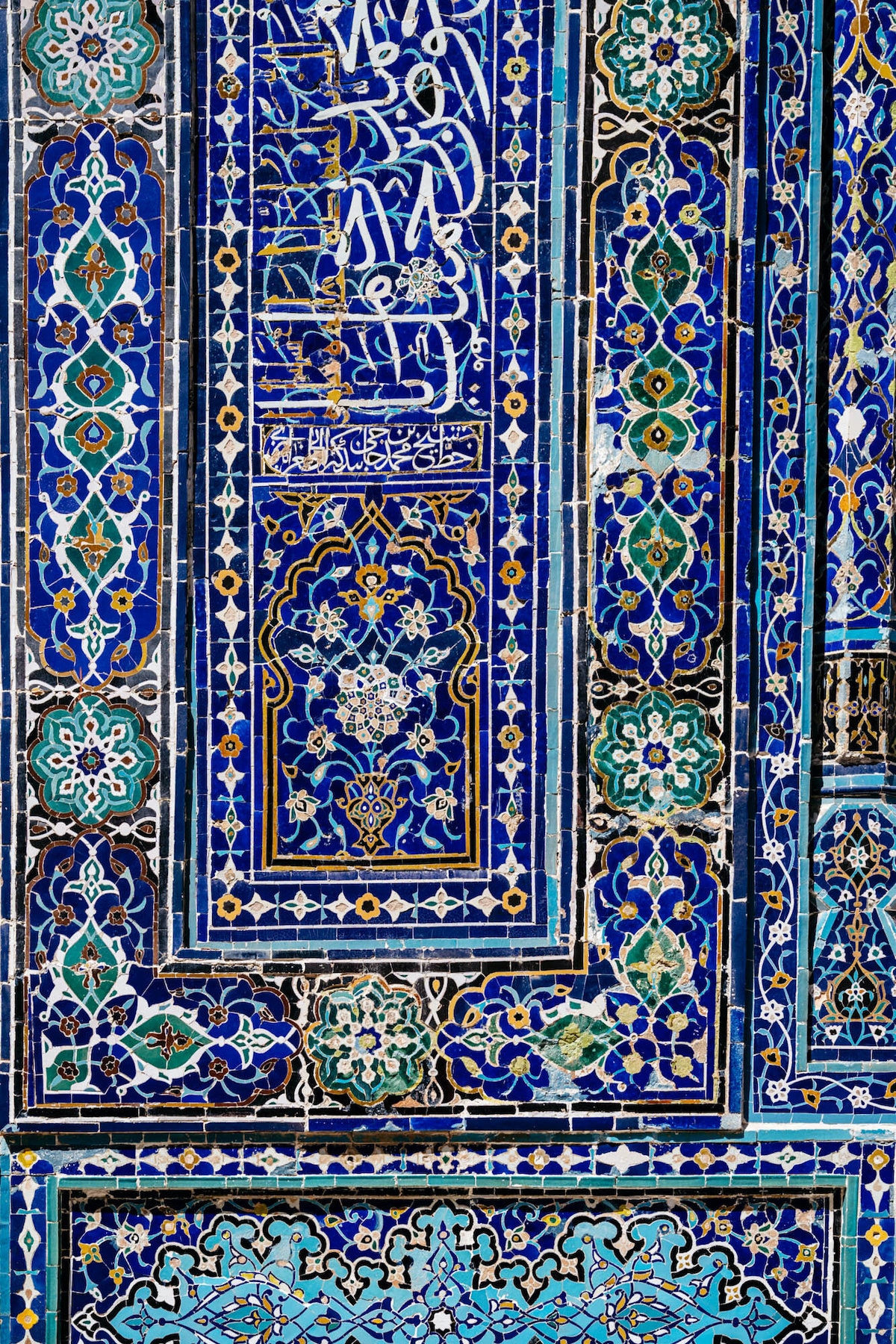
Details from the Shah-i-Zinda tomb complex, Samarkand
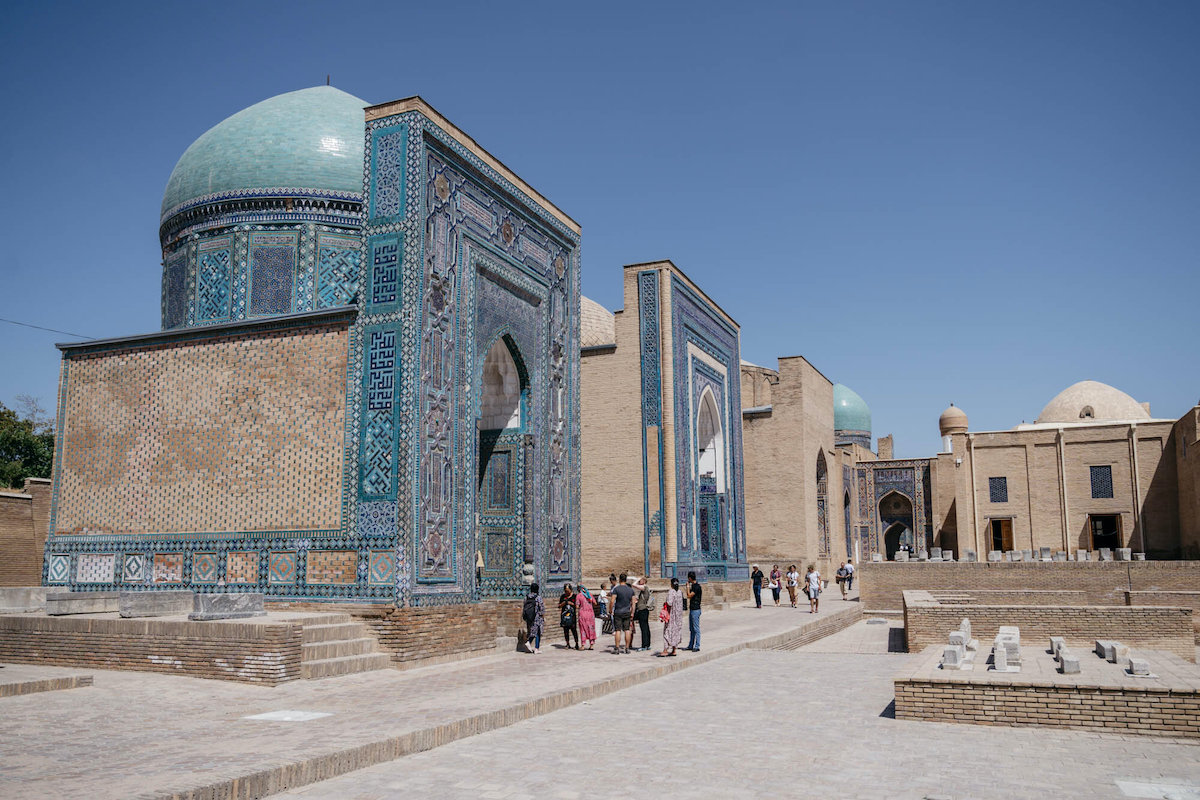
The Shah-i-Zinda tomb complex, Samarkand
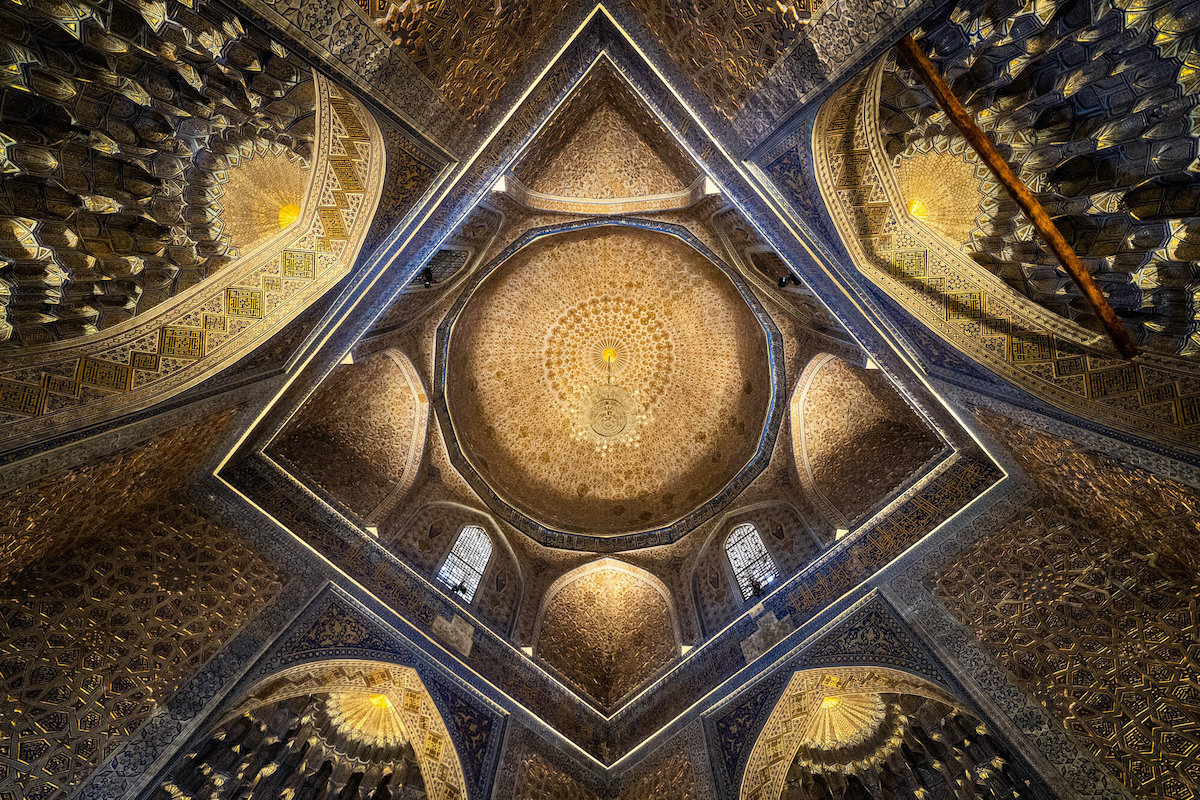
Ceiling details from the Guri Amir Mausoleum, Samarkand
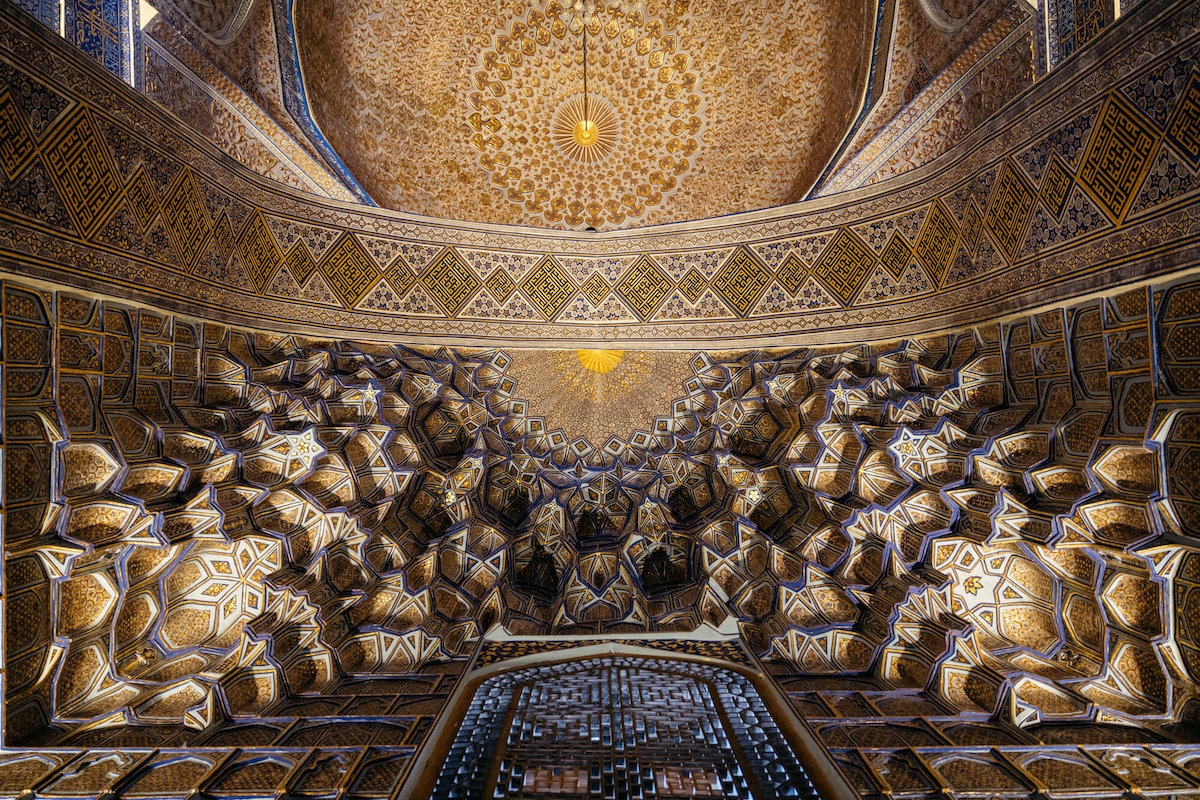
Ceiling details from the Guri Amir Mausoleum, Samarkand

Ceiling details from the Tilya-Kori Madrasah, Samarkand
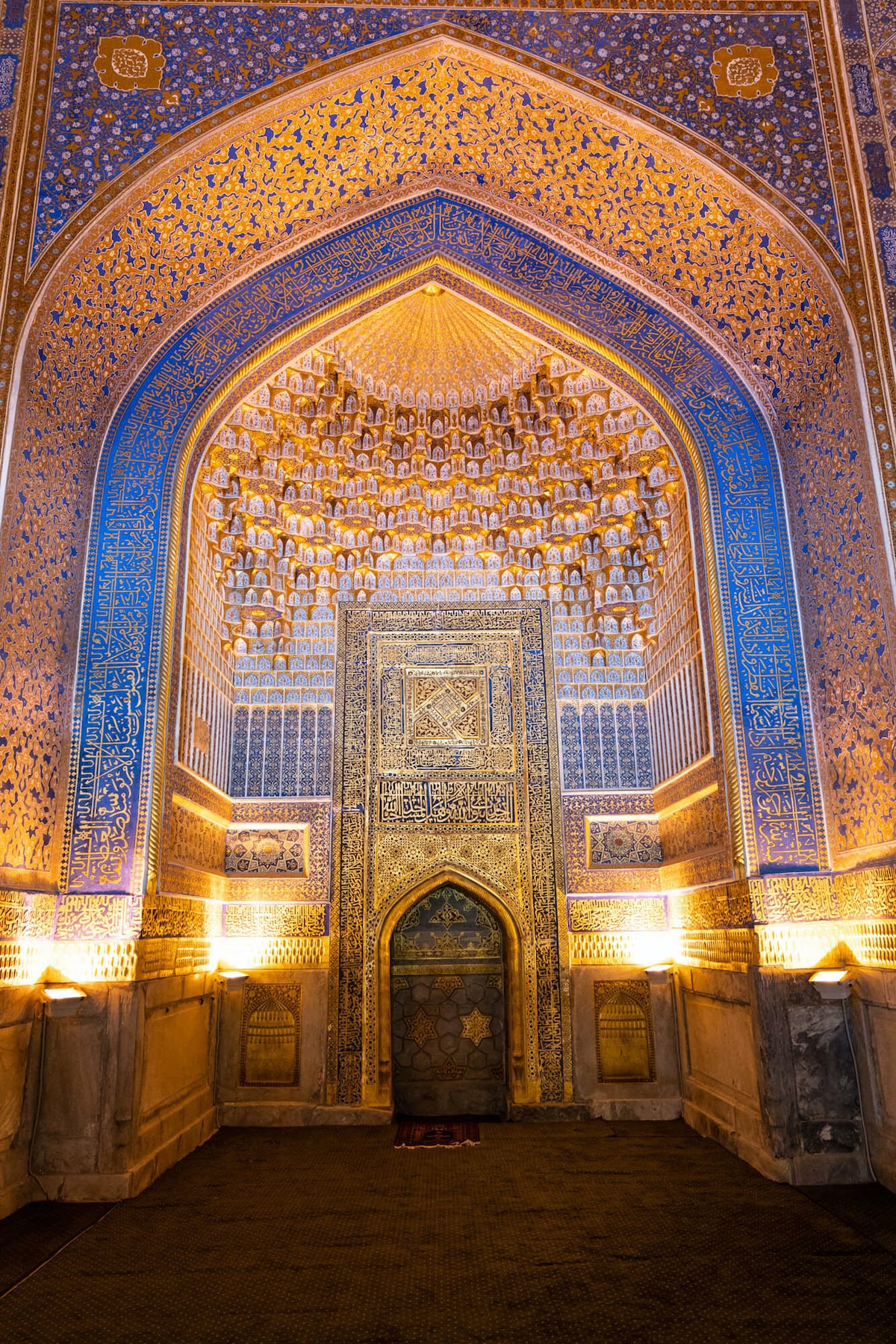
Details from the Tilya-Kori Madrasah, Samarkand
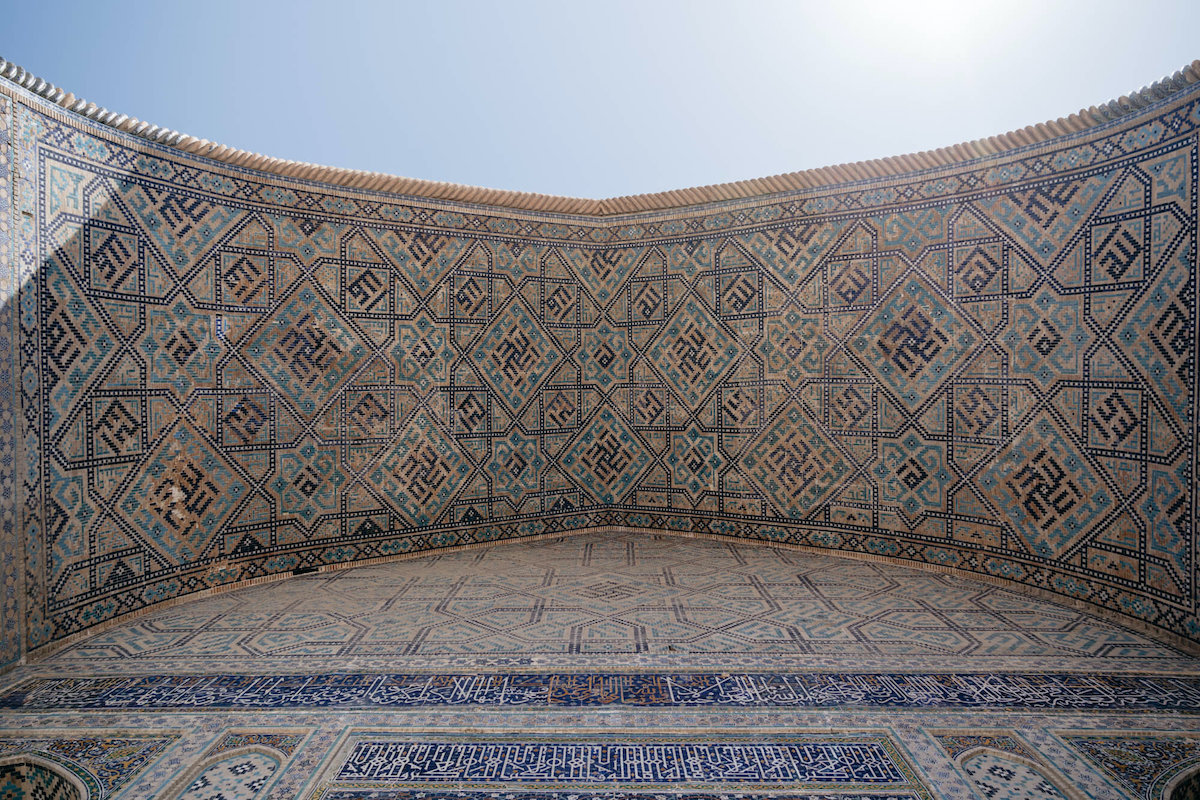
Ceiling details from the Sher-Dor Madrasah, Samarkand
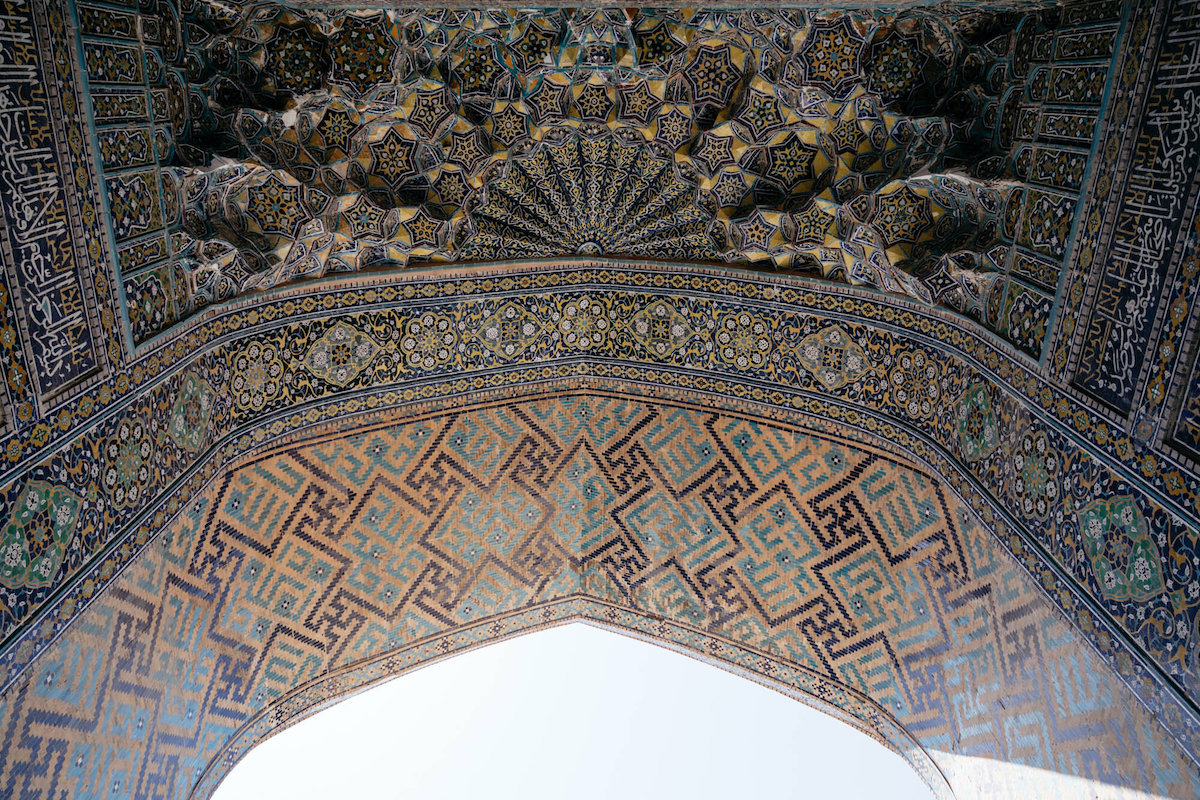
Ceiling details from the Sher-Dor Madrasah, Samarkand

The Sher-Dor Madrasah, Samarkand
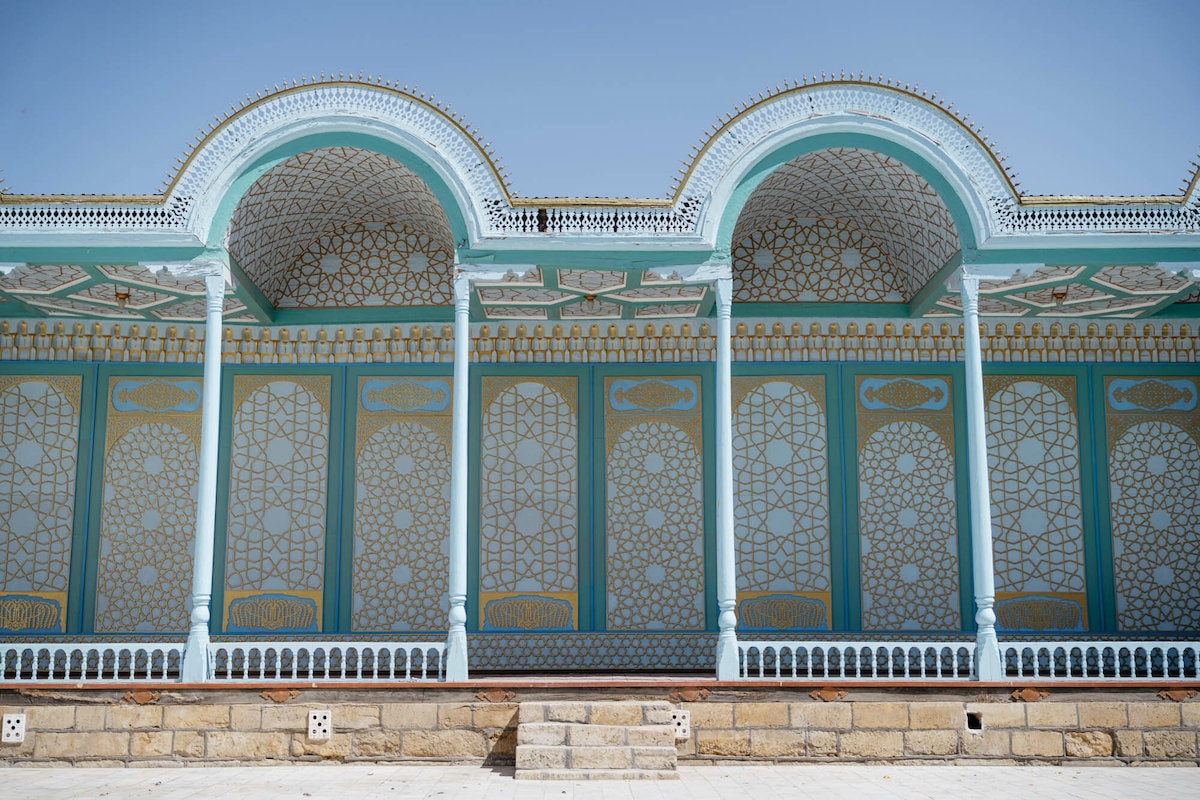
Summer palace of the last Emir of Bukhara
Christopher Wilton-Steer: Website | Instagram
My Modern Met granted permission to feature images by Christopher Wilton-Steer.
Related Articles:
Traveling Photographer Captures the Beautiful Unspoiled Landscape of Kyrgyzstan
Dazzling Architectural Portraits Capture Intricate Interiors of Historic Iranian Mosques
Photographer Captures the Beautifully Kaleidoscopic Ceilings of Mosques
Dazzling Elements of Ancient Islamic Architecture We Still See Today
"dazzling" - Google News
June 14, 2020 at 10:36PM
https://ift.tt/30H3iPy
Photographer Documents the Dazzling Ceilings of Uzbekistan's Palaces - My Modern Met
"dazzling" - Google News
https://ift.tt/2SitLND
Shoes Man Tutorial
Pos News Update
Meme Update
Korean Entertainment News
Japan News Update
Bagikan Berita Ini

















0 Response to "Photographer Documents the Dazzling Ceilings of Uzbekistan's Palaces - My Modern Met"
Post a Comment